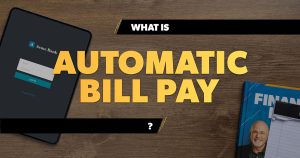Borders are almost non-existent in the digital world. People nowadays buy whatever they want from wherever they live. People from America buy things from China all the time, and the same is true for almost every country in the world. But if you’re a business owner, it is a nightmare for you, as it is an opportunity.
The more countries, means more laws, and the more compliance, and having to deal with more currencies. This makes it challenging if you have global dreams. It makes it look like global aspirations are limited only to the big players like Amazon.
But what if we tell you there’s a solution for this? It’s called “Payment Orchestration”, and it has revolutionised global transactions for businesses that are still growing. But the question is, how? In this article, we’ll dive into exactly that.
The Complex Reality of Global Payments
It might be rewarding to run a small business or agency with clients and teams from all over the world, but processing payments from all over the world can be quite hard. Paying contractors and being paid can be a pain because of high fees, sluggish bank transfers, problems with currency conversion, and confusing payment processes.
Streamlining worldwide payments is important for firms that engage with freelancers, remote teams, or clients from other countries to keep things running smoothly and expenses down. That’s where Parallax comes in. It makes it easy to transfer and receive payments across borders without the usual problems that come with traditional banking.
What is Payment Orchestration?
Payment orchestration is the process of putting all of your payment gateways, processors, acquirers, and other financial service providers on one platform. This unifying method makes it easier for organisations to handle payments, especially those that work in multiple countries and have customers with different preferences.
The global payment orchestration platform market was worth $1.1 billion USD in 2022. It is predicted to increase at a rate of 24.7% per year from 2023 to 2030. Think of it like an air control room of an airport; it isn’t just a payment gateway, it is an entire control room that manages, routes, and optimizes transactions across the different parts of the world.
Key Functions of Payment Orchestration
So, what are the key functions of payment orchestration? Let’s understand it one by one
Multiple Payment Gateway Integration
It lets businesses connect with a lot of different payment gateways and methods, which gives them more options. It allows customers to pay using a variety of methods, like credit and debit cards, e-wallets, bank transfers, and more, depending on what they choose.
Smart Routing
Payment orchestration uses smart routing or intelligent routing to send payments to the best gateway or acquiring bank, depending on things like cost, speed, reliability, and other transaction details.
Fraud Detection
It uses AI and machine learning to find and stop fake transactions, which keeps transactions safe.
Security Compliance
According to RBI rules, payment orchestration platforms must follow security and regulatory standards that are common in the sector. This keeps sensitive payment information safe and keeps customers’ trust.
Real-time Monitoring
Payment orchestration solutions keep an eye on transactional data as it moves through different payment channels and gateways. This involves keeping track of things like the amount of the transaction, the payment method utilised, the time of the transaction, and the status of the transaction. It gives you data and insights in real time using powerful analytics tools.
Why Payment Orchestration Matters for Growing Businesses
So, why does it matter for businesses? Especially the ones with global ambitions. They matter because:
| Benefit | How It Works | Business Impact |
| Revenue Maximisation | Smart routing directs payments through the gateway with the highest success rate. | More approved transactions, fewer failed payments, and direct revenue lift. |
| Operational Efficiency | Single integration to multiple providers saves engineering time and reduces maintenance workload. | Teams focus on core product and growth instead of payment plumbing. |
| Faster Global Expansion | Provides instant access to local payment methods across regions without separate contracts or coding. | Enter new markets quickly, meeting customer preferences everywhere. |
| Customer Experience | Failover systems and diverse payment options reduce checkout friction. | Higher conversion, repeat purchases, and brand trust. |
| Resilience & Flexibility | Multi-provider setup avoids dependency on one vendor. Easy to switch or add providers. | Business continuity even if one PSP faces downtime or regulatory issues. |
| Cost Optimisation | Transactions routed based on cost efficiency, settlement rules, and local benefits. | Reduced processing fees, better margins, and optimized unit economics. |
Use Cases Across Industries
So, the biggest question is, is payment orchestration being used anywhere? Well, they are:
- E-commerce/Marketplaces: Handle seasonal surges, support multiple geographies, reduce cart abandonment.
- Subscription/SaaS: Automated retries for recurring billing, reduced churn from failed payments.
- Travel & Hospitality: Accept diverse global payment methods, handle multi-currency settlements.
- Gig Economy/Platforms: Pay workers globally via local payout systems.
Challenges and Considerations
Payment orchestration is certainly a game-changer for businesses with global ambitions. There are some considerations that need to be made. The table below can explain it perfectly.
| Challenge | Explanation | Consideration for Businesses |
| Implementation Complexity | Requires planning, technical resources, and integration with existing systems. | Ensure internal teams are aligned and capable of managing the transition. |
| Evaluating Partners | Security, scalability, uptime, and transparency vary across providers. | Choose orchestration partners with strong compliance and proven reliability. |
| Cost-Benefit Tradeoff | Orchestration platforms charge fees that may offset savings initially. | Conduct ROI analysis comparing operational savings with platform costs. |
| Suitability by Scale | It may be excessive for very small or single-market businesses. | Assess current growth stage and future expansion before investing. |
Conclusion
There was always a misconception that global payments, being difficult to comply with and having multiple currencies, are reserved only for the biggest players in the game. But Payment orchestration removed all those bottlenecks and made global payments for small growing businesses a reality. It also helps with reducing other issues like cart abandonment, etc.



